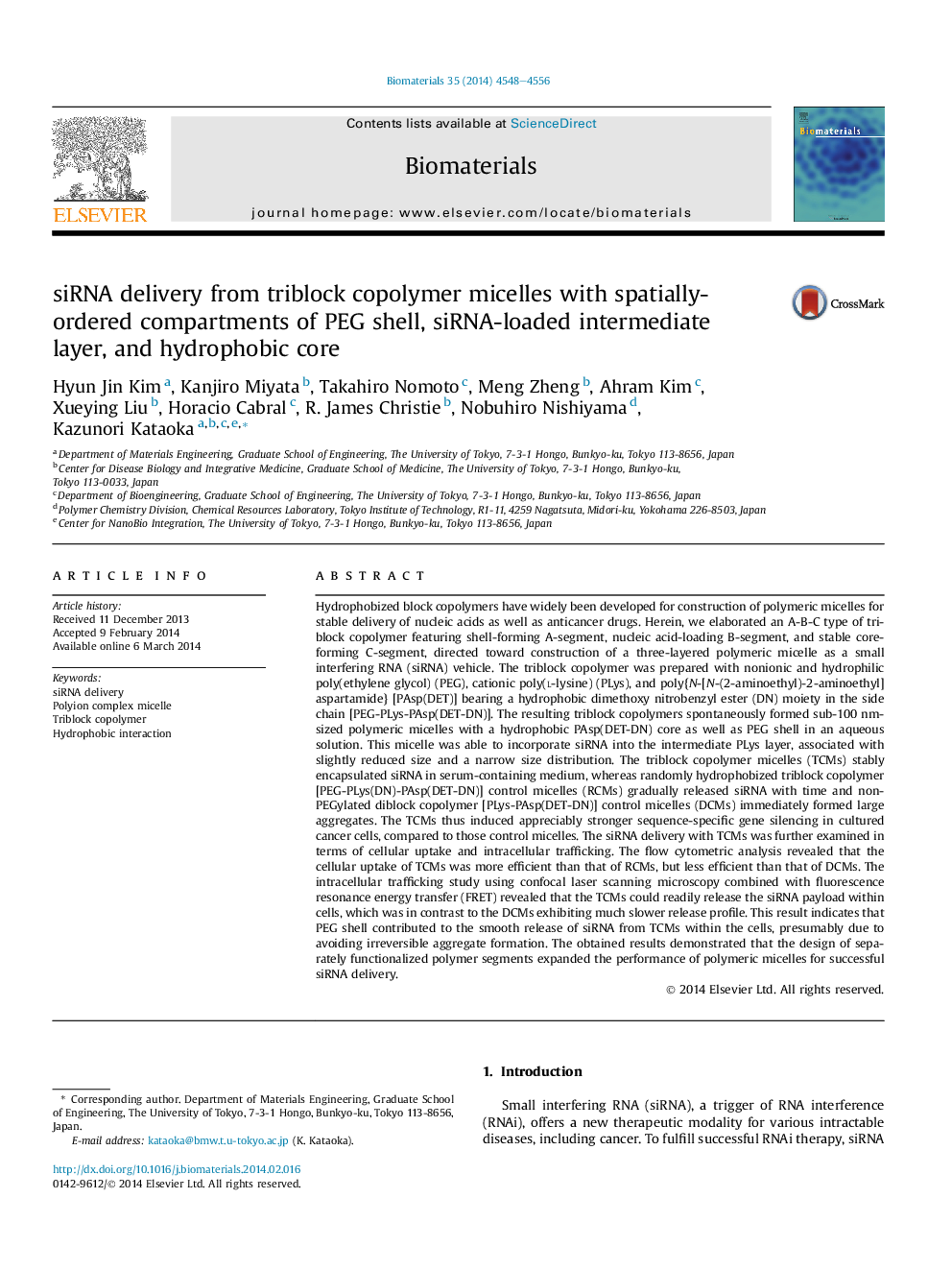| Article ID | Journal | Published Year | Pages | File Type |
|---|---|---|---|---|
| 5848 | Biomaterials | 2014 | 9 Pages |
Hydrophobized block copolymers have widely been developed for construction of polymeric micelles for stable delivery of nucleic acids as well as anticancer drugs. Herein, we elaborated an A-B-C type of triblock copolymer featuring shell-forming A-segment, nucleic acid-loading B-segment, and stable core-forming C-segment, directed toward construction of a three-layered polymeric micelle as a small interfering RNA (siRNA) vehicle. The triblock copolymer was prepared with nonionic and hydrophilic poly(ethylene glycol) (PEG), cationic poly(l-lysine) (PLys), and poly{N-[N-(2-aminoethyl)-2-aminoethyl]aspartamide} [PAsp(DET)] bearing a hydrophobic dimethoxy nitrobenzyl ester (DN) moiety in the side chain [PEG-PLys-PAsp(DET-DN)]. The resulting triblock copolymers spontaneously formed sub-100 nm-sized polymeric micelles with a hydrophobic PAsp(DET-DN) core as well as PEG shell in an aqueous solution. This micelle was able to incorporate siRNA into the intermediate PLys layer, associated with slightly reduced size and a narrow size distribution. The triblock copolymer micelles (TCMs) stably encapsulated siRNA in serum-containing medium, whereas randomly hydrophobized triblock copolymer [PEG-PLys(DN)-PAsp(DET-DN)] control micelles (RCMs) gradually released siRNA with time and non-PEGylated diblock copolymer [PLys-PAsp(DET-DN)] control micelles (DCMs) immediately formed large aggregates. The TCMs thus induced appreciably stronger sequence-specific gene silencing in cultured cancer cells, compared to those control micelles. The siRNA delivery with TCMs was further examined in terms of cellular uptake and intracellular trafficking. The flow cytometric analysis revealed that the cellular uptake of TCMs was more efficient than that of RCMs, but less efficient than that of DCMs. The intracellular trafficking study using confocal laser scanning microscopy combined with fluorescence resonance energy transfer (FRET) revealed that the TCMs could readily release the siRNA payload within cells, which was in contrast to the DCMs exhibiting much slower release profile. This result indicates that PEG shell contributed to the smooth release of siRNA from TCMs within the cells, presumably due to avoiding irreversible aggregate formation. The obtained results demonstrated that the design of separately functionalized polymer segments expanded the performance of polymeric micelles for successful siRNA delivery.
